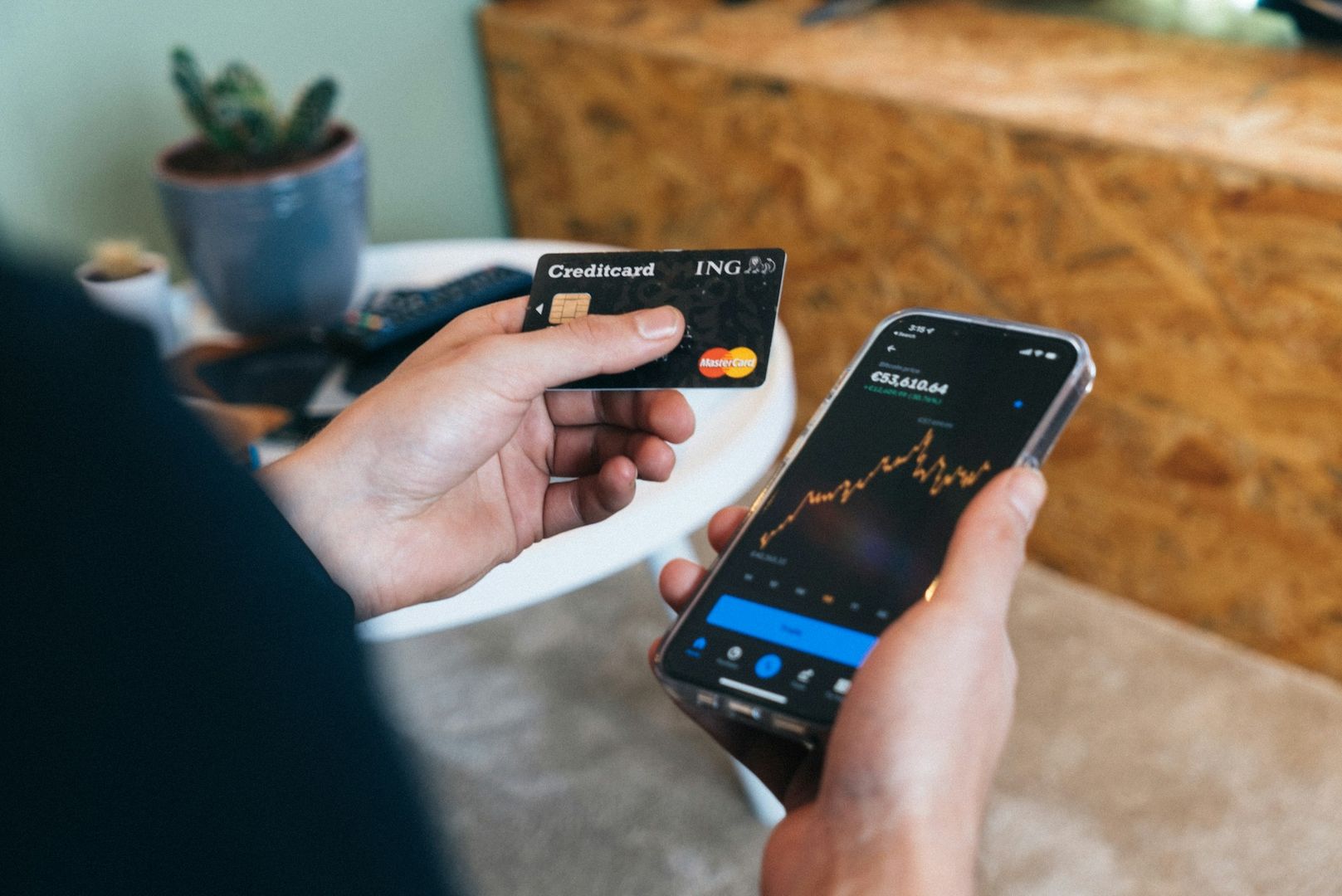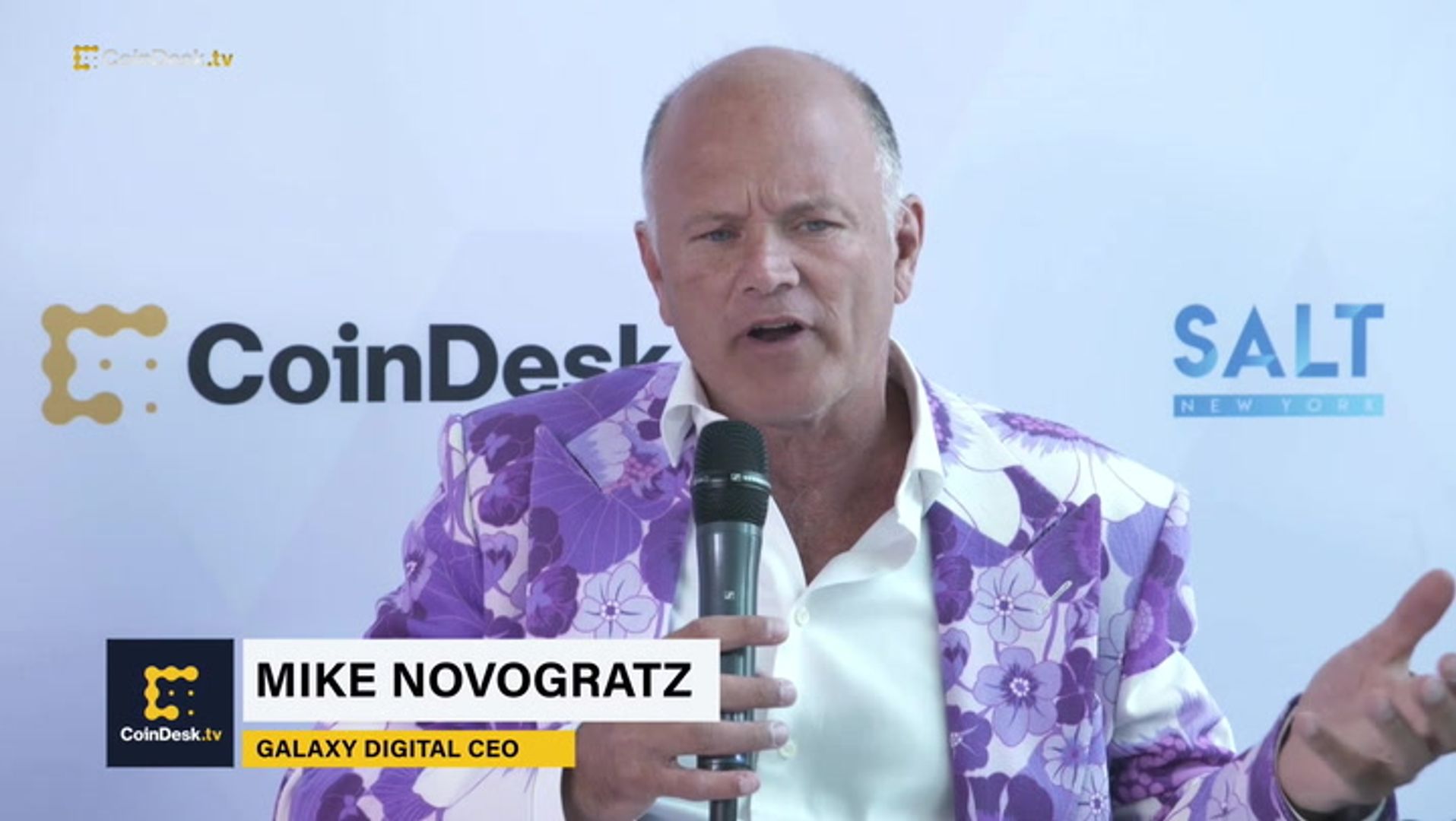Today, Movement Labs made an announcement regarding the suspension of co-founder Rushi Manche. This decision was made in light of Coinbase delisting the MOVE token after reports from Movement Labs revealed...
Read moreBinance
Mastercard has announced its expansion in the digital asset economy with the launch of new global capabilities to support stablecoin payments across its extensive merchant network. The payment giant is collaborating...
Read moreMastercard has announced its expansion in the digital asset economy with the launch of new global capabilities to support stablecoin payments across its extensive merchant network. The payment giant is collaborating with OKX crypto exchange to introduce the “OKX Card,” which aims to connect crypto trading and Web3 activities with everyday spending. Additionally, merchants will soon have the option to settle transactions directly in stablecoins like Circle’s USDC, thanks to partnerships with Nuvei and Circle, with Paxos extending this functionality to other supported stablecoins like USDP.
Jorn Lambert, chief product officer at Mastercard, emphasized the benefits of blockchain and digital assets for mainstream use cases. He stated that making it easier for merchants to receive stablecoin payments and for consumers to use them is crucial for realizing the potential of this technology. Mastercard’s initiative covers various stablecoin use cases, from wallet enablement and card issuance to merchant settlement and on-chain remittances. The company has previously joined forces with crypto exchanges such as Kraken, Binance, and Crypto.com to enable users to pay with stablecoins via traditional cards.
In addition to these efforts, Mastercard introduced the Mastercard Crypto Credential service last year to simplify sending digital assets across borders using verified usernames instead of complex wallet addresses. The company also launched its Multi-Token Network (MTN) in 2023, which facilitates real-time settlements and redemptions of tokenized assets. Ondo Finance became the first provider to bring real-world assets to the network in February.
Please note that parts of this content were generated with the assistance of AI tools and reviewed by our editorial team. For more information, refer to our AI Policy.
- [posts_like_dislike id=893]
El regulator de activos digitales de El Salvador, la Comisión Nacional de Activos Digitales (CNAD), está buscando establecer un “sandbox” regulatorio transfronterizo con la Comisión de Valores y Bolsa de los...
Read moreEl regulator de activos digitales de El Salvador, la Comisión Nacional de Activos Digitales (CNAD), está buscando establecer un “sandbox” regulatorio transfronterizo con la Comisión de Valores y Bolsa de los Estados Unidos (SEC).
“Queremos crear colaboración internacional”, dijo Juan Carlos Reyes, presidente de la CNAD, en una entrevista con The Parrot Press. “Nuestro mensaje principal es que los activos digitales no tienen barreras geográficas. La colaboración con los reguladores no debería tener barreras internacionales tampoco”.
El Salvador se encuentra en una situación única en la que no contaba con instituciones financieras sólidas, ni siquiera con un ecosistema existente de desarrolladores, cuando el presidente Nayib Bukele hizo que el bitcoin fuera de curso legal en 2021. Eso significa que la CNAD pudo comenzar desde cero cuando introdujo un marco normativo adaptado a las criptomonedas.
Casi dos años después de que Reyes se hiciera cargo de la agencia, el avanzado marco regulador de El Salvador ha incentivado a gigantes de las criptomonedas como Tether, Bitfinex y Binance a abrir operaciones en el país.
La idea, según Reyes, es que la SEC de EE. UU. ahora utilice a El Salvador como un caso de estudio real y en vivo para evaluar enfoques regulatorios simplificados para los activos digitales, es decir, para que la SEC aprenda de la experiencia de El Salvador a medida que redefine su propio marco regulatorio en un mundo posterior a Gensler.
El programa piloto propuesto por la CNAD involucra diferentes escenarios: un corredor de finanzas tradicionales con licencia en EE. UU. que obtiene una licencia de activos digitales bajo regulaciones de la CNAD, y el desarrollo de dos ofertas de tokenización a pequeña escala facilitadas por una empresa de tokenización con licencia de la CNAD. Cada escenario estaría limitado a $10,000.
Estas iniciativas respaldarían algunos de los objetivos establecidos por la comisionada de la SEC, Hester Peirce, en febrero, cuando escribió que el Grupo de Trabajo de Criptomonedas de la SEC, que ahora lidera, adoptaría un enfoque muy diferente hacia la regulación de las criptomonedas de aquí en adelante.
“La CNAD realmente examinó [el documento de Peirce] con un ojo crítico sobre cómo podemos ayudar”, dijo Erica Perkin, propietaria de The Perkin Law Firm y miembro del grupo asesor de la CNAD, a The Parrot Press. “Estamos aquí. Hay datos que [la SEC] quizás quiera recopilar. Es difícil recopilar en EE. UU. … Hemos construido un marco lo suficientemente ágil como para abordar los problemas exactos que la SEC está investigando, y estamos aquí para ayudar y recopilar información sobre cómo podemos hacerlo de la mejor manera”.
La CNAD se reunió con el Grupo de Trabajo de Criptomonedas de la SEC el 22 de abril para discutir la iniciativa. La reunión fue constructiva, según Reyes y Perkin. “Hicieron buenas preguntas”, dijo Perkin. “Están en una fase de recopilación de información. Estaban comprometidos y abiertos a la discusión”.
Reyes ya ha firmado acuerdos de cooperación regulatoria con países como Argentina y Paraguay. En su opinión, la SEC parece estar a la vanguardia en cuanto a comprender las necesidades regulatorias de los activos digitales, mientras que los reguladores en otras jurisdicciones han tendido a ver la regulación cripto desde una perspectiva de finanzas tradicionales.
“La calidad de las personas que conforman el Grupo de Trabajo de Criptomonedas de la SEC es bastante impresionante. Lo entienden. Comprenden la tecnología”, dijo Reyes. “Pudimos tener discusiones precisas sobre lo que se necesita para regular la tecnología … Fue muy refrescante”.
- [posts_like_dislike id=885]
Binance, the leading cryptocurrency exchange globally, is now offering digital asset managers special accounts that enable pooling of their investors’ assets. This innovation aims to make crypto fund management operations more...
Read moreBinance, the leading cryptocurrency exchange globally, is now offering digital asset managers special accounts that enable pooling of their investors’ assets. This innovation aims to make crypto fund management operations more akin to traditional finance experiences.
The newly introduced “Fund Accounts” bring a universal net asset value (NAV) per unit concept to the table. This concept, commonly used by buyside firms, offers a clear and trackable profit-and-loss structure for each fund. Binance emphasized that this move addresses the absence of a common market standard in crypto asset management.
While the world of crypto trading is gradually transitioning from a relatively unsophisticated retail market to a more institutional-friendly environment, the transformation of infrastructure is essential. Catherine Chen, Binance’s head of institutional and VIP, highlighted the demand for expertise and infrastructure in the crypto industry, emphasizing the steep learning curve and entry barriers that currently exist.
Chen emphasized the significance of trust for both investors and managers. Utilizing an established brand with transparent NAV and proof of reserves is crucial for investors seeking assurance. Eligible asset managers, required to hold licenses in their jurisdictions, can now alleviate the administrative burden and focus on creating multiple fund accounts tailored to different trading strategies.
The potential size of asset managers interested in Binance Fund Accounts could range from $1 million to $20 million in assets under management, according to Chen’s estimates. This infrastructure is designed to cater to newer or smaller asset managers, helping them bootstrap and scale their businesses effectively.
- [posts_like_dislike id=875]
Over the past 24 hours, futures bets against higher crypto prices saw losses totaling over $500 million as a strong surge, potentially fueled by a U.S. decision to possibly ease China...
Read moreOver the past 24 hours, futures bets against higher crypto prices saw losses totaling over $500 million as a strong surge, potentially fueled by a U.S. decision to possibly ease China tariffs, resulted in the largest short liquidations since October.
Bitcoin (BTC) rallied from a low of $88,000 on Tuesday to above $93,500 during the Asian morning hours, leading a broader market jump with ether (ETH), Cardano’s ADA, and dogecoin (DOGE) all seeing a 14% increase. Solana’s SOL and XRP also rose by 7%, with all top hundred tokens by market cap showing gains.
Additionally, tokens like Sui Network’s SUI, UniSwap’s UNI, and Near Protocol saw strong gains of up to 18%. Memecoin mog (MOG) surged by 30%, continuing its trend of moving in sync with ETH.
Shorts worth nearly $530 million suffered losses as leveraged bets were unwound, with most short liquidations occurring on Bybit at $234 million, followed by Binance at $100 million and Gate at around $70 million. The largest single liquidation order involved an ETH futures position on Binance, valued at over $4.5 million.
Liquidations happen when an exchange closes a trader’s leveraged position due to a loss of the initial margin. This occurs when a trader doesn’t have enough funds to maintain the trade open.
The spike in crypto markets coincided with Trump’s comments about being open to positive trade talks with China and the possibility of reducing tariffs if a deal is reached. This news helped ease some of the cautious sentiment among traders.
Jeff Mei, COO at BTSE, shared his thoughts on the situation, mentioning the potential for rate cuts and a weakening U.S. dollar, which could explain the surge in bitcoin. If the U.S. dollar continues to depreciate, bitcoin may become a significant store of value as other currencies could also face depreciation.
Overall, the recent market movements reflect a mix of geopolitical factors and investor sentiment, pointing towards a potentially interesting period for the cryptocurrency market.
- [posts_like_dislike id=867]
Galaxy Digital, a firm led by Mike Novogratz, has reportedly exchanged $100 million worth of ether (ETH) for solana’s SOL. According to on-chain data sourced from Wu Blockchain, Galaxy recently transferred...
Read moreGalaxy Digital, a firm led by Mike Novogratz, has reportedly exchanged $100 million worth of ether (ETH) for solana’s SOL. According to on-chain data sourced from Wu Blockchain, Galaxy recently transferred 65,600 ETH (approximately $105 million) to Binance and withdrew 752,240 SOL (around $98.37 million) over the span of two weeks.
The move by Galaxy could be attributed to the fact that Standard Chartered recently stated that ETH is experiencing a “structural decline” and reduced its year-end price target for the asset. Data from an Arkham dashboard reveals that Galaxy Digital currently holds $87.9 million in ETH compared to $23.86 million in SOL.
Despite the lack of comment from Galaxy Digital on the matter, market data indicates that SOL has seen an 8% increase in value over the past month, while ETH has declined by almost 20%. Standard Chartered also mentioned in its note that tokenized real-world assets could potentially stabilize Ethereum, even though the platform has experienced a significant decrease in market capitalization.
Further data from Dune Analytics showcases that decentralized exchange volume on Solana has surpassed $500 billion in the last three months, outperforming Ethereum, whose DEX volume is less than $400 billion. Additionally, active addresses on Solana have exceeded 220 million, while Ethereum and Ethereum Layer-2 addresses combined total just over 80 million.
Some in the cryptocurrency space, like Tron’s Justin Sun, have proposed implementing a tax on Layer-2s as a potential solution to Ethereum’s declining performance. However, this idea has yet to be formalized into an Ethereum Improvement Proposal (EIP) to move closer to implementation.
On another note, flow data from Ether ETFs indicates that investors have withdrawn nearly $600 million from these products in the past two months.
- [posts_like_dislike id=861]
Tags:ADAAIAmericaAppleBinancebitcoinbtcCanadaCoinbaseCommunicationCryptodubaiETHEUFinancegoldJapanminerMoving AverageRobinhoodS&P 500solanaStrategyTeslaTradingTrumpUSXRP
By [Your Name] (All times ET unless indicated otherwise) Bitcoin (BTC) continues to defy global economic uncertainty, inching closer to reclaiming $86,000. It is now less than 3% away from its...
Read moreBy [Your Name] (All times ET unless indicated otherwise)
Bitcoin (BTC) continues to defy global economic uncertainty, inching closer to reclaiming $86,000. It is now less than 3% away from its “Liberation Day” high. To put the move into perspective, bitcoin dominance — which measures BTC’s share of the total cryptocurrency market cap — is approaching 64%, a level not seen since January 2021.
In contrast, the Nasdaq 100 is still 5% away from its own Liberation Day high, underscoring bitcoin’s relative strength versus U.S. equities.
According to X account Cheddar Flow, the S&P 500 has just formed a “death cross” — a traditionally bearish signal that occurs when the 50-day moving average falls below the 200-day moving average. The last time this happened was March 15, 2022, when S&P 500 initially rose by 11% in the following week, only to be followed by a 20% decline. Bearish sentiment is also reflected in the options market, where investors are reportedly buying large volumes of NVDA puts, signaling expectations of lower prices.
In a Bloomberg interview on Monday, Treasury Secretary Scott Bessent reaffirmed confidence in the U.S. bond market, dismissing concerns that foreign nations are dumping Treasuries.
“I am not seeing a dumping of U.S. Treasuries,” Bessent said. “The Treasury has lots of tools, but we’re a long way from needing them.” He also emphasized the enduring status of the U.S. dollar as the world’s reserve currency, despite the DXY index — which measures the dollar’s value against a basket of major trading partners — falling below 100 and dropping over 10% in recent weeks.
Bessent also confirmed that the Trump administration is seeking a new Federal Reserve Chair to replace Jerome Powell, with interviews set to begin later in the year. He concluded the interview by suggesting that the VIX (S&P 500 volatility index) may have peaked after the largest one-day percentage drop in its history last week. Stay alert!
What to Watch:
Crypto:
April 15: The first SmarDEX (SDEX) halving means the SDEX token’s distribution will be cut by 50% for the next 12 months.
April 16: HashKey Chain (HSK) mainnet upgrade enhances network stability and fee control capabilities.
April 17: EigenLayer (EIGEN) activates slashing on Ethereum mainnet, enforcing penalties for operator misconduct.
April 18: Pepecoin (PEP), a layer-1, proof-of-work blockchain, undergoes its second halving, reducing block rewards to 15,625 PEP per block.
April 20, 11 p.m.: BNB Chain (BNB) — opBNB mainnet hardfork.
April 21: Coinbase Derivatives will list XRP futures pending approval by the Commodity Futures Trading Commission (CFTC).
Macro:
April 15, 8:30 a.m.: Statistics Canada releases March consumer price inflation data.
Core Inflation Rate MoM Prev. 0.7%
Core Inflation Rate YoY Prev. 2.7%
Inflation Rate MoM Est. 0.6% vs. Prev. 1.1%
Inflation Rate YoY Est. 2.6% vs. Prev. 2.6%
April 16, 8:30 a.m.: The U.S. Census Bureau releases March retail sales data.
Retail Sales MoM Est. 1.4% vs. Prev. 0.2%
Retail Sales YoY Prev. 3.1%
April 16, 9:45 a.m.: Bank of Canada releases its latest interest rate decision, followed by a press conference 45 minutes later.
Policy Interest Rate Est. 2.75% vs. Prev. 2.75%
April 16, 1:30 p.m.: Fed Chair Jerome H. Powell will deliver an “Economic Outlook” speech. Livestream link.
April 17, 8:30 a.m.: U.S. Census Bureau releases March new residential construction data.
Housing Starts Est. 1.42M vs. Prev. 1.501M
Housing Starts MoM Prev. 11.2%
April 17, 8:30 a.m.: The U.S. Department of Labor releases unemployment insurance data for the week ended April 12.
Initial Jobless Claims Est. 226K vs. Prev. 223K
April 17, 7:30 p.m.: Japan’s Ministry of Internal Affairs & Communications releases March consumer price index (CPI) data.
Core Inflation Rate YoY Est. 3.2% vs. Prev. 3%
Inflation Rate MoM Prev. -0.1%
Inflation Rate YoY Prev. 3.7%
Earnings (Estimates based on FactSet data)
April 22: Tesla (TSLA), post-market
April 30: Robinhood Markets (HOOD), post-market
Token Events:
Governance votes & calls
Venus DAO is discussing the forced liquidation of the remaining debt owed by a BNB bridge exploiter account that “supplied extraneously minted BNB to Venus and generated an over-collateralized debt position.”
Aave DAO is discussing taking further steps to deprecate Synthetix’s sUSD on Aave V3 Optimism over technical developments that have “compromised its ability to consistently maintain its peg.”
GMX DAO is discussing the establishment of a GMX reserve on Solana, which would involve bridging $500,000 in GMX to the blockchain and transferring the funds to the GMX-Solana Treasury.
Treasure DAO is discussing handing the core contributor team the authority to wind down and close the Treasure Chain infrastructure on ZKsync and manage the primary MAGIC-ETH protocol-owned liquidity pool given the “crucial financial situation” of the protocol.
April 15, 10 a.m.: Injective to hold an X Spaces session with Guardian.
April 16, 7 a.m.: Aergo to host an Ask Me Anything (AMA) session on the future of decentralized artificial intelligence and the project.
April 16, 3 p.m.: Zcash to host a Town Hall on LockBox Distribution & Governance.
Unlocks
April 15: Sei (SEI) to unlock 1.09% of its circulating supply worth $10.08 million.
April 16: Arbitrum (ARB) to unlock 2.01% of its circulating supply worth $27.17 million.
April 18: Official Trump (TRUMP) to unlock 20.25% of its circulating supply worth $325.97 million.
April 18: Fasttoken (FTN) to unlock 4.65% of its circulating supply worth $82.60 million.
April 18: UXLINK (UXLINK) to unlock 11.09% of its circulating supply worth $18.29 million.
April 18: Immutable (IMX) to unlock 1.37% of its circulating supply worth $10.07 million.
Token Launches
April 15: WalletConnect Token (WCT) to be listed on Binance, Bitget, AscendEX, BingX, BYDFi, LBank, Coinlist and others.
April 16: Badger (BADGER), Balacner (BAL), Beta Finance (BETA), Cortex (CTXC), Cream Finance (CREAM), Firo (FIRO), Kava Lend (KAVA), NULS (NULS), Prosper (PROS), Status (SNT), TROY (TROY), UniLend Finance (UFT), VIDT DAO (VIDT) and aelf (ELF) to be delisted from Binance.
April 22: Hyperlane to airdrop its HYPER tokens.
Conferences:
Day 2 of 3: Morocco WEB3FEST GITEX Edition (Marrakech)
April 15: Strategic Bitcoin Reserve Summit (online)
Day 1 of 2: BUIDL Asia 2025 (Seoul)
Day 1 of 2: World Financial Innovation Series 2025 (Hanoi, Vietnam)
Day 1 of 3: NexTech Week Tokyo
April 22-24: Money20/20 Asia (Bangkok)
April 23: Crypto Horizons 2025 (Dubai)
April 23-24: Blockchain Forum 2025 (Moscow)
Token Talk
Story Protocol’s IP tokens experienced a 20% drop and recovery within hours during an unusual trading session on Monday.
Trading volume surged on exchanges including Binance and OKX Spot, with $138 million recorded after the price rebound.
The sudden price movement was isolated from broader market trends, sparking speculation about insider activity or coordinated selling.
Also on Monday, MANTRA’s OM token plummeted over 90% in hours, dropping from around $6.30 to as low as 37 cents and wiping out over $5 billion in market capitalization.
The token has since rebounded slightly to trade around 63 cents.
Laser Digital, a Nomura-backed investor, was initially flagged for depositing $41 million in OM to OKX, but the company denied selling, clarifying it was collateral return from a financing trade. Shorooq Investors also denied selling.
Derivatives Positioning
BTC shorts have been liquidated on most exchanges in the past 24 hours, excluding BitMEX and Gate.io, according to Coinglass. The opposite is the case in ETH.
XRP’s perpetual futures open interest has dropped from 544.7 million XRP to 480 million XRP, diverging from the price recovery seen since Monday last week.
SUI, ONDO, ADA and APT have seen a notable increase in futures open interest in the past 24 hours. Of those, XMR is the only one with the positive OI-adjusted cumulative volume delta, representing net buying pressure.
On Deribit, short-dated BTC and ETH options continue to show a bias for protective puts, suggesting cautious sentiment.
Flows on OTC desk Paradigm have been mixed with both calls and puts bought in the April expiry.
Market Movements:
BTC is up 1.19% from 4 p.m. ET Monday at $85,877.18 (24hrs: +1.35%)
ETH is up 0.59% at $1,645.30 (24hrs: -1.97%)
CoinDesk 20 is up 0.99% at 2,519.69 (24hrs: +0.19%)
Ether CESR Composite Staking Rate is up 18 bps at 3.18%
BTC funding rate is at 0.0184% (6.7003% annualized) on Binance
DXY is unchanged at 99.70
Gold is up 1.26% at $3,245.30/oz
Silver is up 0.81% at $32.35/oz
Nikkei 225 closed +0.84% at 34,267.54
Hang Seng closed +0.23% at 21,466.27
FTSE is up 0.92% at 8,209.04
Euro Stoxx 50 is up 0.82% at 4,951.51
DJIA closed on Tuesday +0.78% at 40,524.79
S&P 500 closed +0.79% at 5,405.97
Nasdaq closed +0.64% at 16,831.48
S&P/TSX Composite Index closed +1.18% at 23,866.50
S&P 40 Latin America closed +1.8% at 2,340.02
U.S. 10-year Treasury rate is up 1 bp at 4.39%
E-mini S&P 500 futures are up 0.12% at 5,447.25
E-mini Nasdaq-100 futures are up 0.26% at 18,983.25
E-mini Dow Jones Industrial Average Index futures are unchanged at 40,750.00
Bitcoin Stats:
BTC Dominance: 63.80 (0.16%)
Ethereum to bitcoin ratio: 0.01913 (-0.31%)
Hashrate (seven-day moving average): 896 EH/s
Hashprice (spot): $44.1 PH/s
Total Fees: 6.33 BTC / $536,017
CME Futures Open Interest: 134,730
BTC priced in gold: 26.6 oz
BTC vs gold market cap: 7.56%
Technical Analysis
On Monday, the bitcoin cash-bitcoin (BCH/BTC) ratio failed to penetrate the trendline characterizing the 12-month bear market.
A potential move above the trendline could see breakout traders join the market, lifting BCH higher.
Crypto Equities
Strategy (MSTR): closed on Monday at $311.45 (+3.82%), up 0.62% at $313.38 in pre-market
Coinbase Global (COIN): closed at $176.58 (+0.62%), up 1.28% at $178.84
Galaxy Digital Holdings (GLXY): closed at C$15.81 (+3.47%)
MARA Holdings (MARA): closed at $12.95 (+3.52%), up 1.24% at $13.11
Riot Platforms (RIOT): closed at $7.01 (-0.71%), up 0.71% at $7.06
Core Scientific (CORZ): closed at $7.06 (-0.14%)
CleanSpark (CLSK): closed at $7.78 (+3.73%), up 1.29% at $7.88
CoinShares Valkyrie Bitcoin Miners ETF (WGMI): closed at $12.70 (+1.44%), up 1.44% at $12.90
Semler Scientific (SMLR): closed at $34.26 (+1.48%)
Exodus Movement (EXOD): closed at $39.43 (-10.55%), unchanged in pre-market
ETF Flows
Spot BTC ETFs:
Daily net flow: $1.5 million
Cumulative net flows: $35.46 billion
Total BTC holdings ~1.11 million
Spot ETH ETFs
Daily net flow: -$6 million
Cumulative net flows: $2.28 billion
Total ETH holdings ~3.36 million
Source: Farside Investors
Overnight Flows
Chart of the Day Personalized: Disney’s Bob Iger to exit Apple’s board
In the Ether
**Insert interesting content about current events, stories, etc. in the crypto world**
That’s all for now, stay in-the-know with The Parrot Press for the latest updates and insights on the dynamic world of cryptocurrencies and finance!
- [posts_like_dislike id=821]
Story Protocol’s IP tokens experienced a significant drop of 20% and quickly recovered within hours during a unique trading session on Monday. The price of IP fell from nearly $4 to...
Read moreStory Protocol’s IP tokens experienced a significant drop of 20% and quickly recovered within hours during a unique trading session on Monday. The price of IP fell from nearly $4 to $3.27 in just four hours, only to bounce back to over $4 shortly after hitting the daily low. Most of the trading volume during this event took place on major exchanges Binance and OKX Spot, with trading volumes exceeding $40 million before the drop and reaching $138 million after the recovery.
Despite the IP token’s volatility, the broader crypto market remained relatively stable at the time, with bitcoin trading around $84,000 and no distinct trend affecting altcoins. This made the sudden slump and subsequent recovery of the IP token a notable occurrence in an otherwise quiet market.
There were rumors circulating about large volumes of IP tokens, as well as other tokens like MOVE and LAYER, being sold at discounted prices through OTC deals. This sparked speculation about potential insider activity or coordinated selling among crypto communities on X.
In spite of the price fluctuations, IP-tracked futures only showed $1.4 million in cumulative losses, indicating that the majority of trading activity involved actual spot sales and purchases.
The swift movement of the IP token initially raised concerns of a Mantra (OM)-like selloff, which saw a 90% drop in value within hours the day before for unclear reasons that are still being investigated.
Story Protocol is a Layer 1 blockchain platform that focuses on tokenizing intellectual property (IP), providing creators with the ability to register, license, and monetize their work on the blockchain.
- [posts_like_dislike id=819]







